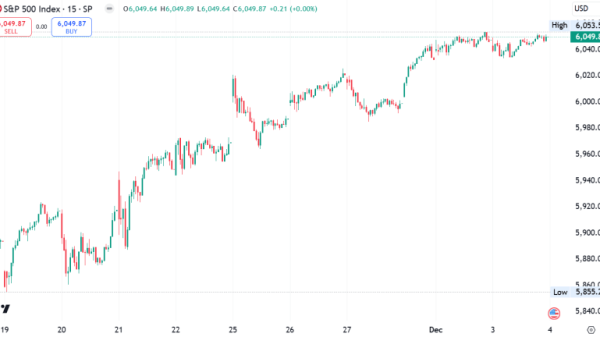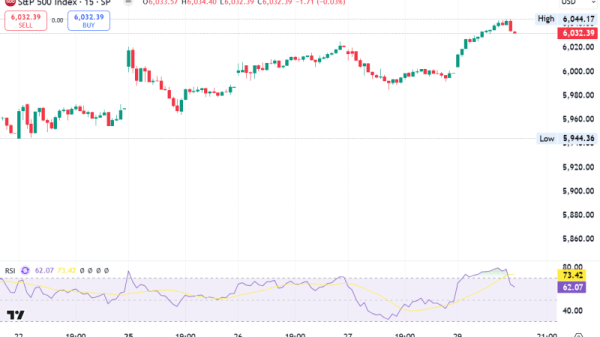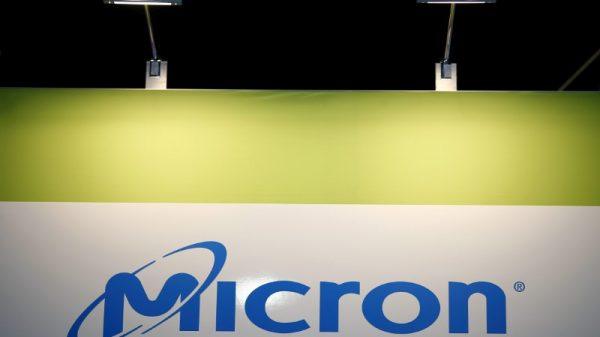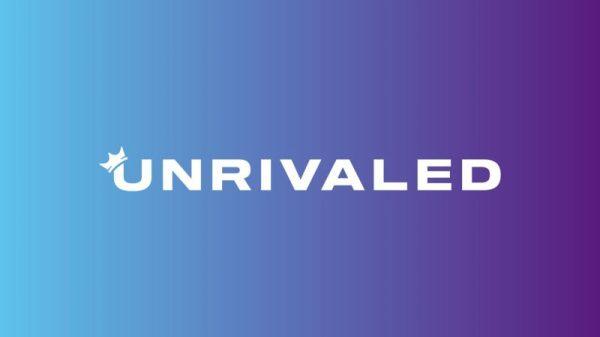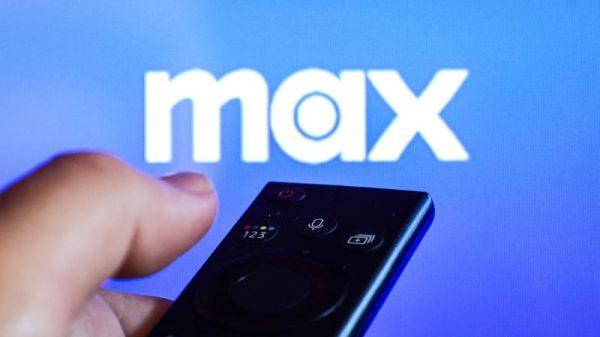Hancock Whitney Corporation (NASDAQ:HWC) reported a net income of $116 million, or $1.33 per share, for the third quarter of 2024, marking a $1 million increase from the previous quarter. The company’s performance was characterized by improved net interest margin and controlled operating expenses.
Key Takeaways:
• Net income of $116 million, or $1.33 per share
• Return on average assets (ROA) of 1.32%
• Net interest margin (NIM) expanded to 3.39%
• Operating expenses decreased quarter-over-quarter
• $450 million reduction in loans, primarily due to strategic decrease in SNC exposure
Company Outlook
• Anticipates modest growth in non-interest income and expenses for Q4
• Expects loan growth to stabilize as new projects emerge
• Projects modest NIM expansion due to fixed asset repricing and CD portfolio adjustments
• Focuses on organic growth, with M&A opportunities considered but not planned
Bearish Highlights
• Deposits fell, but mix of demand deposits remained stable at 36%
• Increase in criticized loans, attributed to a recent SNC exam
• Potential challenges in various sectors, but executives believe credit is appropriately marked
• Anticipates modest decline in fee income for Q4 due to unsustainable nature of some specialty income increases
Bullish Highlights
• Strong asset quality performance compared to peers
• Maintained reserve of 1.46%
• Repurchased over 300,000 shares during the quarter
• Strong capital ratios: tangible common equity (TCE) of 9.56% and common equity Tier 1 ratio of 13.79%
• Significant growth in specialty fee income streams in Q3
Misses
• $450 million reduction in loans, primarily due to strategic decrease in SNC exposure and higher pay-offs in commercial real estate sector
• Higher charge-offs in Q3 linked to specific C&I credits
Q&A Highlights
• Loan modifications primarily term-related, typically rolled forward in 90 to 120-day increments
• Hiring plans to be detailed in January, focusing on recruiting talent in Texas and Florida
• Total deposit betas for the current cycle expected to be around 37-38%, with interest-bearing deposit betas at 57-58%
• Fraud losses have decreased compared to previous years, attributed to enhanced detection efforts
Hancock Whitney Corporation reported a solid financial performance in the third quarter of 2024, with a net income of $116 million and improved net interest margin. The company’s strategic decisions, including the reduction of SNC exposure and focus on organic growth, have positioned it to navigate the current economic landscape.
Despite a $450 million reduction in loans, primarily due to decreased SNC exposure and higher pay-offs in the commercial real estate sector, the bank expressed confidence in solid production and new credit growth. The company’s asset quality remained strong compared to peers, although there was an increase in criticized loans attributed to a recent SNC exam.
Looking ahead, Hancock Whitney anticipates modest growth in non-interest income and expenses for the fourth quarter. The bank projects modest NIM expansion due to fixed asset repricing and CD portfolio adjustments. However, management emphasized the necessity of balance sheet growth to sustain this trend.
The company’s capital position remains robust, with a tangible common equity of 9.56% and a common equity Tier 1 ratio of 13.79%. Hancock Whitney continues to focus on organic growth while remaining open to potential M&A opportunities.
In terms of credit quality, the bank is closely monitoring its portfolio, with a focus on risk classification. While there are indications of potential challenges in various sectors, executives believe credit is appropriately marked.
As Hancock Whitney celebrated its 125th anniversary on October 9, 2024, the bank reaffirmed its commitment to community service and recovery efforts following recent hurricanes, demonstrating its dedication to the regions it serves.
Full transcript – Hancock Whitney Corp (HWC) Q3 2024:
Operator: Good day, ladies and gentlemen and welcome to Hancock Whitney Corporation’s Third Quarter 2024 Earnings Conference Call. At this time, all participants are in a listen-only mode. Later, we will conduct a question-and-answer session and instructions will follow at that time. As a reminder, this call may be recorded. And I would now like to introduce your host for today’s conference, Kathryn Mistich, Investor Relations Manager. You may begin.
Kathryn Mistich: Thank you, and good afternoon. During today’s call, we may make forward-looking statements. We would like to remind everyone to carefully review the safe harbor language that was published with the earnings release and presentation and in the company’s most recent 10-K and 10-Q, including the risks and uncertainties identified therein. You should keep in mind that any forward-looking statements made by Hancock Whitney speak only as of the date on which they were made. As everyone understands, the current economic environment is rapidly evolving and changing. Hancock Whitney’s ability to accurately project results or predict the effects of future plans or strategies or predict market or economic developments is inherently limited. We believe that the expectations reflected or implied by any forward-looking statements are based on reasonable assumptions, but are not guarantees of performance or results and our actual results and performance could differ materially from those set forth in our forward-looking statements. Hancock Whitney undertakes no obligation to update or revise any forward-looking statements and you are cautioned not to place undue reliance on such forward looking statements. Some of the remarks contain non-GAAP financial measures. You can find reconciliations to the most comparable GAAP measures in our earnings release and financial tables. The presentation slides included in our 8-K are also posted with the conference call webcast link on the Investor Relations website. We will reference some of these slides in today’s call. Participating in today’s call are John Hairston, President and CEO; Mike Achary, CFO and Chris Ziluca, Chief Credit Officer. I will now turn the call over to John Hairston.
John Hairston: Thank you all for joining us this afternoon. We are pleased to report our third quarter results, again reflecting improved profitability and efficiency. We achieved a ROA of 1.32% and reported another quarter of NIM expansion, fee income growth and lower operating expenses. Strong earnings facilitated continued growth in capital ratios, now among top quartile peers. Net interest income was up this quarter, due to higher yields on loans and securities and a flat cost of funds. Fee income continues to outperform and expenses remain well controlled and in fact were down quarter-over-quarter. In recent years, we made and continue to make strategic investments in fee income lines of business and are very pleased with continued impressive returns. Turning to the balance sheet. Loans were down $450 million, over $250 million of which is related to our purposeful decrease in SNC exposure. We also saw higher pay-offs due to refinance and sales transactions within the CRE multifamily and CRE industrial portfolio across the footprint. The balance of overall loan reduction this quarter was largely the completion and liquidation of large industrial projects in the Lake Charles, Louisiana market. The balance sheet doesn’t reflect the full story though, as we enjoyed very solid production and new credits during the quarter. We’re also very pleased to have attained peer levels of SNC exposure, a year ahead of the original schedule. This particular line item will generally cease to be a purposeful headwind to growth. We are actively recruiting bankers to support growing the balance sheet next year now that we have reached all our goals in earnings efficiency and capital. Deposits were down in the quarter, but the DDA outflow remains moderated and our DDA mix was consistent at around 36%. There was some normal seasonal runoff in public funds deposits, and we experienced growth in interest bearing transaction accounts and in time deposits despite a reduction in promotional rates during the quarter. Mike will add more detail in his comments later. Our credit quality metrics continue to normalize with a decrease in non-accrual loans, but an increase in criticized loans fully reflecting the results of the recent SNC exam, which was impactful to criticized migration. We expect to compare well versus peers in criticized loans and expect to be in the top quartile for non-accrual loans. Net charge-offs were up quarter-over-quarter, but we continue to see no significant weakening in any specific portfolio sectors or geography. We continue to enjoy a solid reserve of 1.46%, up slightly from the prior quarter. We maintained our posture of returning capital to investors by repurchasing over 300,000 shares of common stock in the quarter. Even after returning capital, we had strong growth in all of our capital metrics due to solid profitability, ending the quarter with a TCE of 9.56% and a common equity Tier 1 ratio of 13.79%. We made modest changes to our guidance for the fourth quarter. As a reminder, we will give full guidance for 2025 on next quarter’s call. October 9th marked the 125th anniversary of our bank charter. We attained this milestone because of our shareholders and clients trust and the efforts of our current and past associates, who live by the core values our founders set forth those many years ago. We have focused on achieving strong profitability, granular revenue sourcing, admirable earnings efficiency, solid capital and ACL reserves, a de-risked loan portfolio and top quartile capital ratios. As we reflect on our past and celebrate our future, we look forward to another 125 years of strength and stability. Lastly, I would like to acknowledge the incredible efforts of our team during the recent hurricanes impacting our footprint. As we again were the last to close and the first to open locations in storm impacted areas. I’m exceptionally proud to serve with colleagues, who are intensely focused on a commitment to serve our communities in their time of greatest need. As we speak, our teams are delivering meals, ice and fuel in hard hit areas to assure we do our very best to serve. Our thoughts and our prayers are with those impacted by these storms and we are committed to being a steadfast partner in the recovery process. For over a century, our bank has been here to help people rebuild and recover and this time is no different. With that, I’ll invite Mike to add additional comments.
Mike Achary: Thanks, John, and good afternoon, everyone. Third quarter’s net income was $116 million or $1.33 per share, so up $1 million and $0.02 per share from last quarter. PPNR growth was again strong this quarter and was up $10.1 million or 10% to $167 million. Express is a return on average assets that’s a peer leading 1.92%. Our NIM expanded 2 basis points to 3.39 driving modest growth in NII. As already mentioned, but our fee income businesses had an outstanding quarter and expenses were again very well controlled. As mentioned, the company’s NIM expanded 2 basis points from last quarter to 3.39%. This expansion was driven by higher loan and security yields, a flat cost of funds and a favorable mix of borrowed funds as shown on Slide 14 of the investor deck. Our cost of deposits was up 2 basis points to 2.02, this quarter mostly due to inflows of high balance money market deposits from the equity markets in August. That in turn drove a mid-quarter bump in our cost of deposits to 2.04%. We finished the quarter at an even 2%, which provides a nice glide path to a more significant reduction in the fourth quarter. Also as expected, we saw $2.6 billion of ceding maturities this quarter, which repriced from 5.04% to 4.62%, driving down the rate on time deposits by about 5 basis points. The pace of DDA outflows continued to slow this quarter with a drop of only $142 million and a stable DDA mix of 36%. We believe the DDA mix could stay at least at this level through year end. With the rate cuts in September and the 225 basis point rate cuts, we anticipate in the fourth quarter, we expect our cost of deposits will be down significantly in the coming quarter. Our loan yield was up 3 basis points to 6.27%, reflecting fixed rate loan repricing and new loan originations, partially offset by lower rates on variable rate loans. Given the two additional rate cuts we expect in the fourth quarter, we do expect loan yields will be down next quarter. Bond yields for the company were up 6 basis points to 2.66% due to our continued reinvestment of cash flows back into our bond portfolio. In the third quarter, $220 million of bonds came off the balance sheet at a yield of 2.69% and were reinvested at 4.74%. Next quarter, we expect about $200 million of cash flows coming off at about 3.10% and will be reinvested at over 4.5%. All this to say that we believe that through the net effect of lower deposit rates, higher bond yields, partially offset by lower loan yields, we do expect to achieve modest NIM expansion in the fourth quarter again, despite two additional rate cuts and limited balance sheet growth. As mentioned, the fee income was again strong this quarter, up 8% from last quarter. We benefited from higher investment and annuity fees, service charges on deposit accounts and specialty income. We now expect non-interest income for 2024 will be up between 6% and 7% from 2023’s adjusted non-interest income level. Expenses were down 1% this quarter, as we continue to focus on controlling costs throughout the company. Our guidance has been updated and we expect to grow expenses between 1% and 2% year-over-year, inclusive of our plans to hire additional revenue-generating staff in the coming quarters. Our PPNR guide is to be flat to down slightly from 2023’s adjusted levels, reflecting our updated expectations on rate cuts, fee income and expense guidance. Lastly, a couple of quick comments on capital. Our capital ratios remain remarkably strong, even after returning capital through continued share repurchases and the recent increase in our common dividend. All things equal, we expect the share repurchases will continue at a similar pace in the fourth quarter. As always, the changes in the growth dynamics of our balance sheet and share valuation could impact that view. I will now turn the call back to John.
John Hairston: Thanks Mike. Let’s open the call for questions.
Operator: [Operator Instructions] Your first question comes from the line of Michael Rose with Raymond James. Your line is open.
Michael Rose: Maybe we could start with Chris. We saw the uptick in criticized commercial loans this quarter and it’s been over the past couple of quarters an upward progression. I see you built the reserve a little bit. Can you just talk us through kind of what’s driving the increase? And then, as we think about the prospects for lower rates, what’s the driving factor to maybe bring some of those loans current? And then just separately, does this have anything to do with maybe accelerating some of the disposition of your SNCs?
Chris Ziluca: No problem, Michael. Appreciate the question. First of all, I just really want to kind of couch everything with the understanding that we continue to really be pleased overall with our asset quality performance, especially in relationship to peers and where we are in the cycle. I know in the past during the calls, we signaled and anticipated some migration, especially in the commercial loan book as it relates to criticized loans. I do want to point out that for the most part, none of the migration really related to our investment commercial real estate book. Most of it was really in our C&I book and we continue to really analyze and interrogate and assess the drivers for the migration. Really, I know it seems like a very simple answer, but we really don’t see specific sectors that are driving the migration. It’s really a geographically spread this quarter, probably more in our Louisiana, Alabama, Texas market. But even then, it was only 60%. So the other 40% was spread out among the other jurisdictions. And even when you think about the industries, 70% of the migration during the quarter was spread out among manufacturing companies, retail and wholesale trade transportation companies, which is a sector that I indicated last quarter and other banks have as well are a little under pressure and then even professional services and information services. Again, some of it was, as John mentioned during his opening comments, a result of our SNC exam and the results that came from that. But even then, only 60% really came from that exam process. And so it was a little bit more diversified in that regard. But we continue to really take a hard look at. We really do — we’ve enhanced our — and this was done a year or two ago, enhanced our watch process, to include a lot more early dialogue around issues that might be starting to percolate below the surface. And then the one thing we did look at was kind of the composition of the recent migration in the past couple of quarters and whether or not we really see any sort of near-term material issues with those credits. And really, we don’t identify any at this point in time. And it’s just kind of where we are in the cycle with respect to kind of slackening of demand off of that kind of buildup during the post-pandemic period and just higher operating costs. And you asked about rates and how that might have some benefit. Obviously, it happened late in the quarter. So any of our customers that have higher borrowing costs aren’t going to benefit from it in their current metrics. And to the extent that there is some further easing in interest rates we believe — or I believe that there will be some benefit. But some of the issues that our customers are experiencing aren’t just interest rates. They are obviously a little bit of softening of demand and just general higher operating costs. But we still feel pretty confident in the book and also in relationship to where we’ve been historically and where we are relative to peers, we feel okay.
Michael Rose: And then maybe just as my follow-up. How should we think about loan growth from here? I know you guys have worked down the SNC portfolio is down close to your target range, the guidance unchanged kind of implies maybe a little bit of growth, but maybe some flatness in the fourth quarter. But assuming that the fourth quarter is kind of the end of the SNC runoff, understanding that you had some projects that paid down as well outside of the SNC this quarter and you’re going to be hiring some people. How should we — I know it’s early for 2025, but how should we be thinking about loan growth from here? And does this kind of incorporate the forward curve in terms of what your outlook might be assuming you’d have greater growth as rates would come down?
John Hairston: Michael sure. This is John. I’ll take that one. You mentioned the SNC parts, so I’ll start there. Page 8 breaks down the loan growth numbers for the quarter by sector. But I can provide some color that may more directly answer your question. So I think as I said in the prepared comments, about $250 million of the total reduction was in the SNC portfolio. That was planned. It’s been something we’ve been trying to do for the past several quarters. And frankly, I’m pleased to get to the point to where we can kind of call it even to appear now, related relative to exposure to our peer — with our peers. And we can kind of start having that self-inflicted headwind for growth at this point. So there may be a little bit of runoff left in the fourth quarter, but that would just be just in terms of the timing of when we’re bringing deals in and taking them out. So I think we can kind of call the SNC self-induced headwind pretty much over. Now in — with terms of growth, Michael, I wouldn’t suggest that that’s going to be a book that grow as much, but I do think it will be held relatively flat as a percentage of overall loans as we move into a little bit more growth year numbers in total credits. The second one you mentioned was those project paydowns. And you may remember, there was a lot of press around the very large LNG projects that occurred in the Lake Charles area of Louisiana that were extremely beneficial to that market in the state in general. The projects that we partly financed have been wrapped up. Those contractors have been paid and they, in turn, paid down their operating lines. So the little downward jump you see on Page 8 in the top right of line utilization is materially all of that amount of paydowns. And so that was the second chunk. And really the only thing unplanned in terms or unexpected in terms of overall loan growth because we did see more pressure on the CRE book in terms of payoffs. There’s always a lot of churn in it. But this quarter — and it started really the prior quarter, we saw the private equity market as well as bridge lenders come in very strong, very aggressive in both pricing and terms. And so the paydowns occurred there at a little higher level than we anticipated. Given that the pipeline has begun to improve in C&D, we are looking at more new projects, that diminishment overall C&D, you see on Page 8, is really more the timing between the paydowns that occurred and the time it takes for borrowers to run through their own equity before they begin to borrow on the lines that we’ve already improved. So we’ll begin to see that come in as we get into ’25. So I guess, if I try to put overall tone, I would say demand is still a bit tepid, but there’s definitely green shoots of progress out there. Our commercial banking pipelines are beginning to build. It is too early to know the timing of when people begin to feel a little bit better. But I suspect we’ll need to get the election behind us and maybe a little more demonstration of rate movement downward by the Federal Reserve to see the projects on the fence finally tip over to get executed. But the pipeline is building. In more granular sectors of our business purpose lending book still having terrific success there, the business banking group, the SBA group are quarter-over-quarter, really doing terrific work. And in fact, we have another quarter, a record quarter of SBA volumes and fee income. That’s reflected on Page 17 in the fee markets. So we feel pretty good about where we are with loan numbers, I think, with some of the headwinds out of the way and the new bankers coming online as we get to ’25 we certainly expect to have a better story next year, which we’ll cover on the January call or in the — when we cover the end-of-year numbers, the updated CSOs and some guidance for the year. Did I answer what you were looking for there, Michael, or do you want to ask a question?
Michael Rose: No, that’s good. I appreciate all the color. I’ll step back.
Operator: And your next question comes from the line of Catherine Mealor with KBW.
Catherine Mealor: We go back to the margin. And I appreciate the guidance for fourth quarter, I’m glad to see that we can still see the NIM higher next quarter. We just wonder if you could just kind of talk us through how you’re thinking about the margin structurally as we move into next year without just giving the exact guidance, as you — how do you think about — it feels like you’re kind of generally as it maybe liability sensors in the near-term. Is there a scenario we can still see the margin increasing through next year? Or is this increase really just a result of some of the things you can give on your CD book, and it’s more likely that we’ll see some NIM compression as we move into 2025.
Mike Achary: Catherine, it’s Mike. And I think the way to think about it is the first kind of talk about the fourth quarter and what we’re expecting and look, some of those themes, I think, will certainly carry forward into ’25. So, just as we’ve experienced the last couple of quarters, our NIM continues to be driven by really our fixed asset repricing and then the repricing of our CD portfolio. So those things help drive the NIM expansion in the third quarter. They will again help drive the modest NIM expansion that we’ve kind of guided to for the fourth quarter. And then as we head into 2025, again, as John mentioned, we’ll talk in much more detail about guidance for ’25 in January. But that theme, I think, continues into ’25 around having a lot of opportunities to reprice our bond book just for ’25. And these numbers, I think, will change or evolve a little bit, but we have the better part of $700 million of principal cash flow coming back to us from the bond portfolio next year. You can probably add to that another $300 million or $400 million where our fair value hedges on specific bonds become effective. So that will be a real, I think, headwind toward — I’m sorry, a tailwind toward helping with NIM expansion into next year. And then on our CD book, in the prepared comments, everybody kind of talked about the third quarter, repricing of the $2.6 billion in the fourth quarter, we’ve got a little bit north of $3 billion repricing at an advantage of close to 100 basis points. And then into ’25, there’s going to be some significant turnover in our CD book, so call it, close to $10 billion of CDs repricing again, at an advantage of, we think, at least 100 basis points. So all those things combined give us a pretty good tailwind as we go through ’25. And certainly, that helps with some of our near-term liability sensitivity. But just as we’ve talked about throughout really the second half of the year, the missing ingredient really for us to continue NIM expansion and NII expansion in a down rate environment really needs to be balance sheet growth. And certainly, John has already kind of talked about how we’re thinking about growing the loan book into next year. So if we’re successful in doing that, we certainly have, I think, a pretty good chance as a modestly asset-sensitive company, being able to continue NIM expansion in a down rate environment.
Catherine Mealor: And then is it all higher than organic growth as a prime way to get there? Or does M&A become more of an interest to you. I think one thing that John has said many times be more worried about revenue growth than credit risk. And so in an environment where we still feel pretty good about credit, and we’re really looking at revenue growth. Do you think you can hit your target just organically? Or does M&A become a bigger piece of your story?
Mike Achary: Well, when we think about our plans and the way we put together our business plan for next year and for 2016, we really think about it, first and foremost, from an organic perspective. So the plan that we put together is built on organic balance sheet growth. So we don’t plan for M&A. Certainly of those kinds of opportunities present themselves in the next year or two. That’s something that we certainly would take a look at. But it’s not anything we’re planning for, per se, if that’s helpful.
Operator: And your next question comes from the line of Brett Rabatin with Hovde Group.
Brett Rabatin: I wanted to start with the fee income. And just with the guidance in the fourth quarter and the annuity income usually being higher in 4Q. I’m curious if you could give us some more color on the other bucket in 3Q, specifically how much derivative income, SBIC, BOLI and SBA might have been unusual in 3Q? And then just maybe how much that might come down in 4Q to reconcile that 6% to 7% for the full year?
Mike Achary: Sure, Brett. This is Mike. I’ll get started, and certainly, John can add some color. So if we look at the third quarter, again, an absolutely excellent quarter across the board really for fee income growth. So it’s certainly something we’re very pleased to be able to report. And again, really, I think shows the success of the investments that we’ve made in the past couple of years in our fee income businesses. So again, if we look at the third quarter, Slide 17 in the deck kind of are outlines through that waterfall graph, the various components. And certainly, the other income does stick out. This quarter, it was up $5.6 million quarter-over-quarter. And the vast majority of that increase really came from what we referred to as our specialty fee income lines. So talking about things like SBA fees being up about $1.6 million our SBIC income or venture capital income was up about $700,000. BOLI showed a nice increase of about $0.5 million and then derivatives were up almost $2 million. So, that’s the better part of the $5 million that was showing this $5.6 million growth quarter-over-quarter. So as we think about the fourth quarter, certainly, we would expect to see continued growth in wealth management, so our trust fees as well as our annuity income to some extent. And certainly, when you look at quarter-over-quarter, considering the fourth quarter, really can’t necessarily count on some of these specialty lines to again show the level of increase that we showed in the third quarter. So when we think about fee income in the fourth quarter, we would expect to see somewhat of a modest drop between the third and fourth quarter. So John, anything you want to add to that.
John Hairston: Any of the question on the fees and we can clarify for you, Brett?
Brett Rabatin: No, that’s helpful, guys. And then just wanted to talk about capital for a second. And I know with the outlook for the fourth quarter in a flattish balance sheet and then maybe in ’25, the growth becomes more prevalent again at some point. But it feels like given your level of profitability, you could continue to have some capital accumulation even despite the share buyback. Any thoughts on just capital accumulation and maybe what the right might be for capital as you view it as core versus excess you want to try and figure out how to invest?
Mike Achary: Sure, Brett. So when we think about capital, obviously, as we’ve talked about in many venues, really going back four years or so, that really has been one of our strategic focus points to build capital to top quartile levels. And I think, certainly, we’ve been able to accomplish that over this time period. So from the numerical perspective, TCE is certainly knocking on the door of 10% and common Tier 1 nearly 14%. So those are attractive levels. And we view those capital levels as things that really just give us a lot of optionality around how we think about managing capital going forward. So in the past couple of quarters, we’ve increased the common and we resumed buybacks and really have guided to looking at both of those things as we move into ’25, with really the top priority for deploying capital really to be — support organic balance sheet growth. So that’s something that we’re looking forward to being able to support next year. And again, we’ve talked a lot about the different things that we’re putting in place to ensure that we’re able to grow the balance sheet, specifically loans next year. So certainly, if that growth for whatever reason isn’t as attractive as what we’re planning for, certainly, we could certainly look at increasing the buybacks or the common dividend or things of that nature. So again, the levels of capital that we have, I think, first and foremost, give us a lot of optionality with respect to how we think about managing the balance sheet, and I think that’s important.
Operator: And your next question comes from the line of Ben Gerlinger with Citi.
Ben Gerlinger: I know we’re kind of beating a dead horse here on the credit, but from kind of the responses thus far, I mean, I think it was 60% of the increase was SNC related. Obviously, that’s rounding or ballpark or you want to phrase it. When you think about just kind of going forward that would back out roughly $75 million of the roughly $130 million linked quarter criticized. Do you have any thoughts on kind of what we should expect going forward, especially with lower rates? I know that some of this is economically dependent and someone who just can’t tell 6 or 9, 12 months from now. But when you think about lower rates and kind of the cleaning up of the balance sheet. Do you feel like you’ve appropriately addressed a lot of the credit or presumably could be so it could potentially be over marked? Or is it still kind of more flower than that?
Chris Ziluca: Yes. It’s definitely a crystal ball type question. We address credit kind of on a daily, monthly, quarterly basis. So we make sure that we have our portfolio and our individual relationships and loans classified correctly. As we kind of look forward, as I mentioned in one of my earlier comments, interest rates definitely have had and do have an impact on the performance of our customers, some more than others. If you think about consumer in general, they’re probably — if they’re kind of a borrower, a net borrower, they’re definitely going to be impacted and benefit from lower interest rates. On the commercial side, many of our customers either hedge or they enter into fixed rate obligations, some are floating, obviously, the floating ones will definitely benefit. The fixed ones will obviously have to kind of reprice over time. And obviously, the buildup in interest rates that we saw over the past year or two was much more dramatic than I think we’re going to see in interest rates coming back down and so the benefit is probably going to be a little bit slower to realize from our customers’ perspective on the C&I side of things. And so I think one of the things that they’re going to have to kind of phase into is general demand for their goods and services. And if there’s kind of a forward view of continued slowness in that regard, then they’re going to have to kind of rationalize their expense base, as they manage through that. And we’re seeing that. I mean we’re seeing some customers managing their inventory levels down because of just a slowness in demand especially for heavy equipment and things like vehicles and more durable goods. And then others are going to have to manage their expenses through just a payroll and many are taking that step as well. So my view, sitting where I am right now is I think we have our credit book appropriately marked or classified. And it just remains to be seen what happens as either rates help or any sort of kind of twist in the economic cycle, manifest itself in a particular sector. But as I indicated, I mean, we’re pretty spread out from industry specific issues. So I think they’re very situational at this point and rather than being geographic or industry specific outside of transportation, which I still think is — we’re not heavily weighted in that area, but we are definitely seeing some things in that space.
John Hairston: Ben, this is John. Just to add a little color and maybe this is more in line with what you’re looking for. But clearly, inflation reducing the cost of workforce becoming a little bit more reasonable or certainly not going up as fast as it was and the cost of variable rate money coming down are certainly tailwinds to improve the bottom line for clients. But as you know, we have to risk rate based on current and relatively reasonably previous financials. And so the outlook for how well things may get unfortunately can’t be inclusive in the rate. So it’s a little bit of a rear view, the comments we’re giving you a rearview look on ratings and a forward view and confidence of things working out pretty well. Hopefully, that’s helpful.
Ben Gerlinger: Yes, it is helpful. I mean we’ve got a few e-mails the criticized jump spooks on people, but I think the SNC review and then like you said, credit is a little backward looking in this respect, especially if it kind of rate focus probably as some of the peers. Kind of a little more nuanced question. It’s not modifying lens continue to go up. Not that do you know, any color there would be helpful.
Chris Ziluca: Sure. Yes, this is Chris again. Just by its nature, if you imagine a special assets department, we tend to manage the portfolio kind of on a short duration basis as we work through individual issues. So as loans mature with customers that we’re looking to either encouraged to refinance elsewhere or to allow them to get to a better place, we keep the duration of the maturity short. And so most of our modifications are term related because we roll them forward in 90 and 120 day increments. And over a period of time, you then have to classify those loans as modifications, even though it’s part of the strategy that we work through with those customers.
Operator: And your next question comes from the line of Gary Tenner with D.A. Davidson.
Gary Tenner: I wanted to ask about kind of the overall guide on PPNR as it is now versus where it was last quarter. If you kind of look at the midpoints of what you provided for fees and expenses in the last quarter on PPNR with the changes now. It certainly would appear that NII for full year is coming in lower than what you would have thought a quarter ago despite the fact that you still are guiding to additional modest NIM expansion and the loan growth that hasn’t really changed. So is it a function of maybe just the balance sheet not growing at all really kind of back half of the year? Or what’s the primary item there just as kind of then we’re thinking about rolling forward into 2025?
Mike Achary: So when we think about PPNR, I mean, obviously, the guidance that we’re giving is kind of annual guidance. But at this point, it’s pretty easy to back into what we’re expecting for the fourth quarter. So I think you’re right in terms of the size of the balance sheet and the fact that it really hasn’t grown at all and really has deleveraged a little bit in the second half of the year. So I think that’s driving certainly some of the leveling off, if you will around NII that we’re expecting in the fourth quarter. Add to that, we already kind of talked about fees where we had the better part of $5 million of kind of specialty items that really can’t be counted on, on a quarter-over-quarter basis. I do think we’ll have some of that repeat in the fourth quarter, but it really — it’s hard to pinpoint exactly what that might be. On the expense side, I do think while we had an absolutely tremendous quarter in terms of actually reducing expenses quarter-over-quarter, I think we’re more likely than not to see a little bit of an increase in the fourth quarter. So I think if you kind of put all that together, again, while we had, again, a great quarter for PPNR growth in the third quarter, that’s likely to come down a little bit in the fourth quarter, I think.
Gary Tenner: I mean it was — the question was really focused on the NII piece, but you answered that and the nuance on the expenses is helpful as well. And then just a second question, as it relates to the comments, John, about recruiting efforts. Can you give any context around kind of numbers that you’re targeting? Or how you’re thinking about how many folks you could add to staff and what kind of talent that could be as you’re looking out into next year?
John Hairston: Yes. This is John. Thanks, Gary, for the redirect. In terms of hiring, we really aren’t ready to talk about the numbers yet. We plan to do that in January. Our expectation is to be recruiting right now. And although we have made some hires, we want to get all the recruiting efforts done for four or five months and then report both progress and what our expectations are for is part of the ’25 guidance. So it’d be a little premature to do it now. We’ve got a fair number of offers out. But as you know, pull-through rate is not going to be 100%. So I’ll step away from numbers right now. But I can say that the recruiting efforts have been very warmly received so far. We do offer a somewhat unique environment where there’s a really terrific partnership between the line credit and the treasury function in terms of helping set rates and being creative in terms of putting packages together that are attractive to new clients when they first come in the door. And for those clients that are looking to expand. So the effort has been pretty warmly received and we look forward to talking about it as we get into ’25. In terms of where I think you asked where — we’re glad to accept good talent, particularly for its experience really in any of our markets, but our recruiting efforts have been more focused in the areas of our footprint that have a natural higher organic growth rate and so that would be Texas and Florida. And generally speaking, we’re recruiting bankers and the — a little less than the middle market size relationships, what we call commercial business banking and SBA, and also wealth advisers, given the success of our wealth management offering, we still have places where we think we can add wealth advisers and get accretive pretty quickly. So it takes about 12 months for new bankers to begin adding kind of on a flywheel basis profitability in between 18 and 24 months for them to become materially profitable and closer to the target operating model. And we’ve had that in place for about 10 years, and it tends to be really good and predictive after just four or five months in terms of whether it’s going to work out well or not. So I think the recruiting or going to be something good to talk about when we get to January.
Operator: And your next question comes from the line of Matt Olney with Stephens.
Matt Olney: Mike, it sounds like you feel good about deposit pricing so far. It’s obviously early in the cycle, but just would love to hear any updated thoughts you have on deposit betas throughout the cycle in this kind of down cycle maybe as compared to the past betas that you disclosed in your presentation.
Mike Achary: Sure, Matt. And yes, I think you’re right. We do feel good about our ability to continue to control deposit costs going forward. So we were pretty proactive in reducing our promotional rates, especially on CDs coming into the Fed move. So our top promotional CD rate is a three month at 4.5% and we lowered that 50 basis points. We also have a five month at 415 and then 8 and 11 month at 4%. So those rates, I think are attractive. They’re all at that kind of almost magical number of above 4% now. So we’ll see where that goes from here. Our guidance for the fourth quarter really includes 225 basis point rate cut. So obviously, we’ll address deposit pricing as we go through the rest of the quarter. As far as our deposit betas or really our betas for this cycle, you can see at the bottom of ’16 kind of for the last three cycles. And this isn’t per se guidance, but just — let’s just call it expectations. So expectations for the current cycle around our total deposit beta probably something between 37% and 38%. When we look at our interest-bearing deposit betas 57% to 58% and then on the loan side, somewhere around 49% to 50%. So those are our expectations. That’s what we — those are the things we’re striving for through this cycle. And it will be interesting to see how the cycle progresses post-election and through next year.
Matt Olney: And then, going back to the credit discussion. Really a great commentary on the criticized loans and the deterioration there. Did I miss the details behind the commercial loan charge-off in the third quarter? I’m just looking for any kind of color behind that.
Chris Ziluca: No, you didn’t miss the question. Yes. So charge-offs were a little bit higher this past quarter. We had a couple of C&I credits that we’ve been kind of working through and made the decision that now is the best time to kind of charge them down given where they are. We’re still working through those issues with those customers, but wanted to make sure that it was kind of in the right spot moving forward. So we took some partial charges to kind of address that. The rest were pretty run rate oriented in nature, much smaller. So not much to talk about there.
Operator: And your next question comes from the line of Christopher Marinac with Jamie Montgomery Scott.
Christopher Marinac: I wanted to ask about risk adjusted returns, particularly on risk adjusted yields in the commercial book as rates fall. I mean as you look out a couple of quarters, would you imagine it gets easier to get your longer-term risk-adjusted yields or does it get hardest?
Chris Ziluca: I’ll attempt that even though I’m much more credit risk focused than that. But yes. I mean I think what you see is oftentimes during kind of periods of turmoil that risk and returns don’t always perfectly lined up. And I think as time moves on, we’re going to continue to see them get better aligned. I think right now, people are focused on certain sectors more than others, and so they can get a little crazy with the types of yields and the returns that they’re willing to accept in those areas. But as we start to see a broader demand across C&I and CRE, I think you’ll see a little bit more rationalization on risk-adjusted returns. We continue to be focused on that. I mean it’s one of our key mandates here, which is making sure that we get paid for the risk. If the risk is perceived to be lower from a credit quality standpoint, then we’ll accept a little bit better or lower rate on a transaction. But we won’t sacrifice rate for credit quality.
Christopher Marinac: And then just for either you or Mike, what do you say in terms of fraud from sort of small business-related deposits? And is that showing up at all in some of the sundry expense lines?
John Hairston: Chris, this is John. Did you say fraud?
Christopher Marinac: Yes, fraud.
John Hairston: I’ll take that and Mike can jump in or Chris, if you like. Fraud, both on the consumer and the small business side has been a challenge for the last several years. I think during the pandemic, people were distracted. And I think the bad actors, again, it makes a pretty good headway. Actually, the way this year is go and our fraud losses have been less this year than they were last year or the year before. It wasn’t because there were less intense because we spent a good bit of money tools and people to try to detect issues before they turned into a loss. But it’s a real virus on the industry and on the economy of the country. And I think all of us are going to have to continue investing into it to try to protect our clients. But a lot of it — and a lot of expense that we’re having to add over time is just in the education of our clients in terms of how they put in internal controls that banks have been using for a long time, but if they need to implement their own businesses.
Mike Achary: Chris, this is Mike. The only thing I would add to that is that there was nothing specific in the third quarter that rose to the level of being called out. In fact, I think our fraud overall fraud expense is really down a bit.
Operator: And that is all the time we have for questions today. I would like to turn the conference back over to Mr. John Hairston for closing remarks.
John Hairston: Okay. Thanks, Abby. Thanks for moderating the call. Thanks, everyone, for your interest. I know a busy release today. We look forward to seeing you on the road soon.
Operator: Ladies and gentlemen, this concludes today’s call, and we thank you for your participation. You may now disconnect.
This article was generated with the support of AI and reviewed by an editor. For more information see our T&C.

